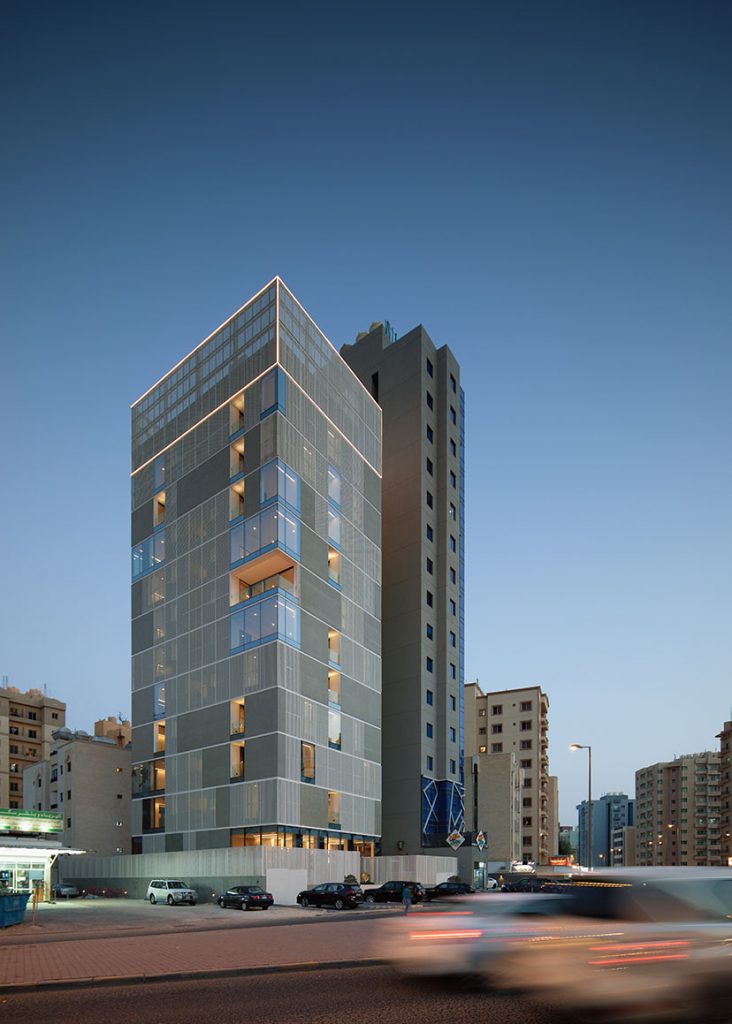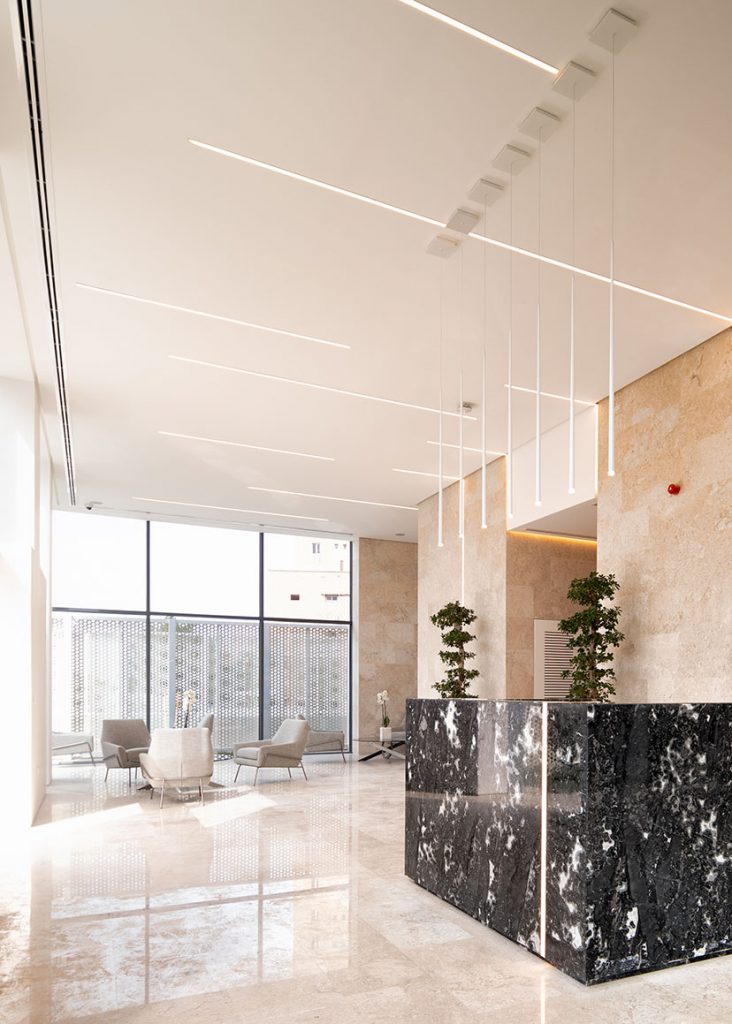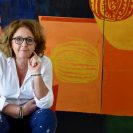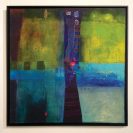Their latest accomplishment, Jade, is a mid rise multi-unit residential building in Salmiya, Kuwait, that houses 20 independent residential units. Built on an 813 Sqm plot, the building has a double basement parking, an open plan ground floor with a gym and kids play area, 10 stories of residential units, and a rooftop social space with a 15m long pool and barbeque area. The exterior envelope of the building is a composite skin of light concrete, perforated aluminium panels and high-performance glass panels. The design of the building aims to facilitate an urban and sustainable way of living for young families.
The Studio Toggle Team made up of, Hend Almatrouk, Gijo Paul George, Rui Goncalves, Pedro Varela, Fabio Verissimos, Somshekhar Rai, Mani Kuruvilla and Ashlon Frank, worked with the given budget, environmental limitations and proposal to come up with a design that aligns with their values as a firm to design a building that works with the environment and for the tenants and client.

The building occupies a compact urban lot in a high-density area with close proximity to neighbouring buildings. The location straddles the upscale Arabian Gulf Road and the less affluent inner-city neighbourhoods. The site is confined by the main avenue with considerable traffic on the west and a narrow side alley to the north. The placement of the building is determined by the existing plot constraints.

The living units are organized around the access core with interior gardens connecting different living spaces. Social spaces face the main avenue and the sea, while private areas turn to the southeast side. Through the variation of patio and balcony positions, different floorplans are achieved. The singularity of living spaces becomes the essence of the project. The architects decided to use passive systems to generate microclimates within the apartments. A careful analysis of the sun movements with the height of surrounding buildings helped develop the facade by employing strategic subtractive operations. The perforated metal cladding with a weatherproof coating acts as adequate thermal protection, along with the insulated concrete panels, to withstand the harsh desert climate.
An internal garden was strategically placed inside every apartment unit on the periphery to act as a sun barrier and funnel the wind to facilitate natural ventilation. The facade of the building and the internal gardens helps control the microclimate in the liveable areas. The materials used comprise a very restrained palette of metal surfaces and concrete finish accounting for durability. Respecting the budgetary constraints, a low-tech approach was used considering sustainable material choices and energy consumption.

Jade is designed to be a housing project that goes against the grain amongst the chaotic urban density. It successfully solves the crucial issues in Kuwait’s current multi-unit housing typology – lack of identity, natural lighting, accessible green and communal spaces, ineffectively planned apartments that create substandard living conditions, and insufficient parking. The building tackles these issues by creating a new apartment typology with efficiently designed and comfortable apartments with internal garden spaces. The apartments are flooded with plenty of natural lighting, and passive cooling techniques create pleasant habitable conditions. It disrupts the existing monotonous housing typologies by creating apartment units that have character and individuality. Tenants’ interaction is encouraged with social spaces incorporated in the ground and roof levels; furnished lobby spaces, accessible green spaces, kids play area, gym, pool, etc.
The design explores a new typology by adapting and scaling up the traditional middle eastern courtyard house concept with Mashrabiyas (privacy screen) in a multi-level, multi-unit scenario without compromising the vernacular’s original qualities combating extreme weather typical in Kuwait.
Photos were taken by Gijo Paul George @gijo. photo on Instagram. Follow @studiotoggle on Instagram for more information.











